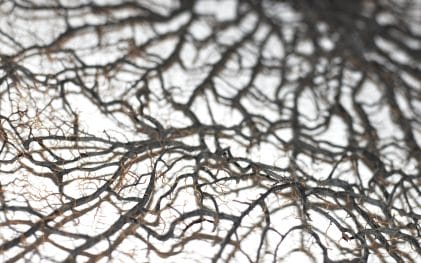Latest roots-application-area
Root Structure and Function Gradients in Salt Marshes
Salt marshes are unique ecosystems characterized by micro-heterogeneity in elevation, soil, tidal inundation, salinity, and oxygen availability. In these extreme conditions, plants are adapted to each zone, so root traits also vary. Root biomass, density, tissue type, and size of roots are adapted for each of the three prominent zones in salt marshes. Salt marshes… Continue reading…

Additional reading
Five Ways To Increase Harvest Index
Improving the harvest index is crucial for economic and ecological reasons. The means to increase the harvest index can vary with the crops. Plant breeding is more critical for maize, while irrigation practices are vital for rice. Growth regulators that increase source activity and strengthen sinks are needed in pineapple, while growth retardants to limit… Continue reading…
A Look Back at Root Research Breakthroughs in 2024
Several reviews that consolidate state-of-the-art show huge strides in root research. Many studies have explored underlying physiological, anatomical, and molecular causes of previously observed morphology or root responses to environmental and soil conditions. Research is focused on applying these underlying mechanisms to manipulate patterns in root morphology and growth to increase crop yield sustainably or… Continue reading…
How Minirhizotrons for Nematode Detection Improve Root Health Monitoring
Early studies used minirhizotron to understand how nematode-roots interaction impacts yield. Minirhizotrons have also been used to quantify nematode damage and cultivar selection. Minirhizotrons can show symptoms like root swelling and root trait changes at infection sites. Root studies have increased in number recently due to novel data collection techniques, such as imaging through minirhizotron… Continue reading…
Climate Change Effects on Plant Development: Comprehensive Insights
Climate change can alter plants’ roots, vegetation, and reproductive development. Climate change effects on plant development can sometimes be similar across species or depend on tissue, species, genotype, and development stage. Plants are most sensitive to temperature and drought stress effects during the reproductive phase. Several features characterize climate change, like higher concentrations of greenhouse… Continue reading…
Understanding Fine Root Dynamics: Key Insights and Methodologies
Fine roots have a diameter of 0.1–2 mm and are essential for nutrient acquisition for individual plants and carbon and nutrient cycling for ecosystems. Research shows fine roots are not a single group; root order determines form, anatomy, physiology, and function. Fine root age is another significant factor that influences functioning and dynamics. Though fine… Continue reading…
Understanding Drought Impact on Crop Yield: Stages, Mechanisms, and Adaptations.
Drought’s impact on crop yield affects plant stages differently, moderated by genotype and external environmental factors. Very early drought can inhibit germination and seedling establishment, reducing stand density and yield. Drought during reproductive and grain filling can reduce yield quantity and quality more than during the growth phases. Drought is the primary environmental stress crop… Continue reading…











